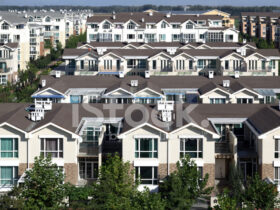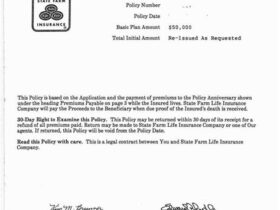Home insurance is a crucial financial safety net, protecting your home and belongings from unexpected events like fire, theft, or natural disasters. However, understanding the average home insurance cost and the factors that influence it can be challenging. This article breaks down the key elements that determine your premium, offers tips on securing the best deals, and helps you navigate the complexities of home insurance in the United States.
What Does Home Insurance Cover?
Before diving into the cost, it’s essential to understand what home insurance covers. A standard policy typically includes:
- Dwelling Coverage: Protects the physical structure of your home, including the walls, roof, and foundation.
- Personal Property Coverage: Covers your belongings inside the home, such as furniture, electronics, and clothing.
- Liability Coverage: Protects you if someone is injured on your property and you’re found liable.
- Additional Living Expenses (ALE): Pays for temporary housing and living expenses if your home is uninhabitable due to a covered loss.
Understanding these core coverages is the first step in assessing your insurance needs.
Factors Influencing Home Insurance Costs

Numerous factors contribute to the price you pay for home insurance. Insurers assess risk based on a variety of characteristics related to the property and the homeowner.
Location, Location, Location: Your geographic location significantly impacts your premium. Areas with higher crime rates, susceptibility to natural disasters (hurricanes, tornadoes, earthquakes), or a history of flooding will generally have higher insurance costs.
Home’s Age and Construction: Older homes can be more expensive to insure due to potential issues with outdated wiring, plumbing, or roofing. The materials used in construction also play a role; for instance, a home with a wood frame might be more vulnerable to fire than a brick structure.
Coverage Amount: The amount of coverage you need directly affects your premium. Higher coverage limits for dwelling and personal property will result in higher costs. Accurately assessing your rebuilding cost (not market value) and the value of your possessions is crucial.
Deductible: Your deductible is the amount you pay out-of-pocket before your insurance coverage kicks in. Choosing a higher deductible typically lowers your premium, but you’ll need to be prepared to pay more in the event of a claim.
Claims History: A history of previous claims can increase your premium. Insurers view homeowners with prior claims as higher risk.
Credit Score: In many states, insurers use credit scores as a factor in determining premiums. A lower credit score may result in a higher premium.
Security Features: Homes with security systems, smoke detectors, and deadbolt locks are generally seen as less risky and may qualify for discounts.
Roof Condition: The age, material, and condition of your roof are important factors.
Swimming Pool: Having a swimming pool increases liability risk and usually results in higher insurance costs.
Other Structures: Detached garages or sheds.
Average Home Insurance Cost in the US

Pinpointing an exact “average” home insurance cost is tricky because it varies widely based on the factors mentioned above. However, as a general guideline, the national average annual premium for homeowners insurance in the United States falls somewhere around $1,200 to $1,700. This is just an estimate, and your actual cost could be significantly higher or lower.
It’s more useful to consider regional averages and personalize your research based on your specific circumstances. For instance, homes in coastal states prone to hurricanes will likely face higher premiums than those in landlocked areas. Similarly, homes in states with frequent earthquakes will also have higher insurance costs.
How to Calculate Your Coverage Needs
Determining the right amount of coverage is essential for protecting your home and belongings. Here’s how to approach the calculation:
Dwelling Coverage: Estimate the cost to rebuild your home if it were completely destroyed. This is not the same as your home’s market value. Consider factors like construction costs, labor rates, and materials used in your area. Consult a building cost estimator or a local contractor for accurate estimates.
Personal Property Coverage: Make an inventory of your belongings and estimate their replacement cost. Consider using a home contents insurance calculator or creating a detailed list with photos or videos. Don’t forget to include items in your garage, attic, and shed.
Liability Coverage: Choose a liability coverage limit that adequately protects your assets if you’re sued. Consider factors like your net worth and potential legal expenses.
Finding the Best Home Insurance Deals
Shopping around and comparing quotes from multiple insurers is the best way to find the most affordable home insurance. Here are some tips for securing the best deals:
Compare Multiple Quotes: Get quotes from at least three to five different insurance companies. Online comparison tools and independent insurance agents can help you gather quotes quickly.
Bundle Policies: Consider bundling your home and auto insurance with the same company. Many insurers offer discounts for bundling.
Increase Your Deductible: Raising your deductible can lower your premium, but make sure you can comfortably afford the higher out-of-pocket cost in the event of a claim.
Improve Your Home Security: Install security systems, smoke detectors, and deadbolt locks to potentially qualify for discounts.
Maintain Your Home: Regular maintenance can prevent costly repairs and reduce the risk of claims. Keep your roof in good condition, trim trees that overhang your home, and address any plumbing leaks promptly.
Review Your Policy Annually: Home insurance needs can change over time. Review your policy annually to ensure you have adequate coverage and that you’re still getting the best deal.
Look for discounts: Ask your insurer about available discounts, such as those for seniors, first-time homebuyers, or those with smart home devices.
Understanding Policy Exclusions

It’s crucial to understand what your home insurance policy doesn’t cover. Common exclusions include:
- Flood Damage: Most standard home insurance policies don’t cover flood damage. If you live in a flood-prone area, you’ll need to purchase separate flood insurance.
- Earthquake Damage: Similar to flood damage, earthquake damage is typically excluded from standard policies and requires separate earthquake insurance.
- Wear and Tear: Gradual wear and tear, such as a leaky roof due to age, is generally not covered.
- Pest Infestations: Damage caused by termites or other pests is usually excluded.
The Importance of Regular Policy Review
Home insurance isn’t a “set it and forget it” type of product. Your needs and circumstances change over time, so it’s essential to review your policy regularly. Consider the following:
Home Improvements: If you’ve made significant home improvements, such as adding a new room or remodeling your kitchen, you’ll need to increase your dwelling coverage to reflect the increased value of your home.
New Possessions: If you’ve acquired valuable new possessions, such as expensive jewelry or electronics, you may need to increase your personal property coverage or add a rider to your policy to specifically cover those items.
Life Changes: Life events like marriage, divorce, or having children can affect your insurance needs.
Conclusion

Understanding the average home insurance cost requires a thorough understanding of the various factors that influence premiums. By carefully assessing your coverage needs, shopping around for the best deals, and regularly reviewing your policy, you can ensure that you have adequate protection for your home and belongings at a price that fits your budget. Don’t hesitate to consult with an insurance professional to get personalized advice and guidance.





Leave a Reply